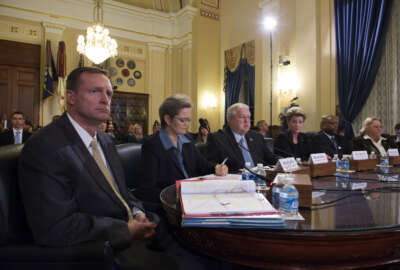
Hit the health plan jackpot: A $5K pay raise
A few thousand Washington-area federal workers could be in for a surprise $100-a-week pay raise, says Senior Correspondent Mike Causey.
Non-trick question: What’s the price difference between a health plan that covers a family of two and that same plan’s new self-plus-one option? Same two people, two very different sets of premiums. Give up?
Answer: $5,110. The person with the traditional family plan (whether that family consists of two people or 20 people) will pay $100 a week more for the same coverage than someone who moves into that plan’s new self-plus-one (S+1) option. So what’s the catch? Actually there two catches…
First and most important, is the plan you are in now. The plan with the biggest 2016 premium gap — the difference between the famly plan and the new S+1 option — is the MD-IPA plan. It’s an HMO and most of the people who are in it live in the metro Washington area. Its family premium this year (regardless of family size) is $8,870. But if a two-person family downsizes and moves into MD-IPA’s new S+1 option this month, the premium will drop to $3,760. No change in benefits, doctors or services. Just a $5K plus savings in premiums. Money that goes directly to your pocket. Or your direct deposit paycheck account. But it is yours to spend. The equivalent — if you and your plan fit the mold — of a $100-a-week pay raise.
For feds in other health plans the savings are smaller. Or in some cases nonexistent. But you won’t know until you’ve looked. You may be holding the equivalent of a winning lottery ticket!
Federal and postal workers in two-person families have until the end of this month to go from family to S+1 coverage. They must stay in the same plan, but they can downsize to the new option. It’s an ideal situation for two-person families such as couples, or a single parent with one child. The difference in premiums between the traditional family plan and the new S+1 option are not as dramatic in other plans. And in a couple of cases the new two-person plan will cost more in premiums than the S+1 option. Go figure.
In many cases, persons eligible to switch options can save several hundred dollars in premiums this year. That’s why the Office of Personnel Management offered this first (and probably last ever) special enrollment extension. Next year’s premiums could vary greatly between family and S+1 coverage. But this year a lot of people can save some money. In some cases a lot of money. If you are in a two-person family, or know someone who is, checkout this chart— courtesy of Kaiser Permanente — to see if your in a plan where downsizing options would save money.
Walton Francis, editor of Consumers’ Checkbook Guide to Federal Health Plans is our guest today at 10 a.m. on our Your Turn radio program. He’ll talk about the family vs. S+1 differences and explain why some of the differences are so dramatic.
Election Year And You: Congress and the White House sometimes treat federal workers, and retirees, differently in an election year. Sometimes better, sometimes worse. Sometimes feds get a break because all the political infighting diverts anti-bureaucrats’ attention. At 10:30 a.m., today on Your Turn, Capitol Hill expert Jessica Klement talks about the outlook for feds and retirees the year. She worked on Capitol Hill, was legislative director of the Federal Managers Association and now heads the legislative department at the National Active and Retired Federal Employees. If you have any questions for her you can call during the show or email them to me at mcausey@federalnewsradio.com.
Nearly Useless Factoid
Bing Crosby’s 1942 recording of “White Christmas” is the best-selling single of all time, with an estimated 50 million copies sold worldwide.
Source: Wikipedia
Copyright © 2025 Federal News Network. All rights reserved. This website is not intended for users located within the European Economic Area.
Mike Causey is senior correspondent for Federal News Network and writes his daily Federal Report column on federal employees’ pay, benefits and retirement.
Follow @mcauseyWFED
More from Federal News Radio





